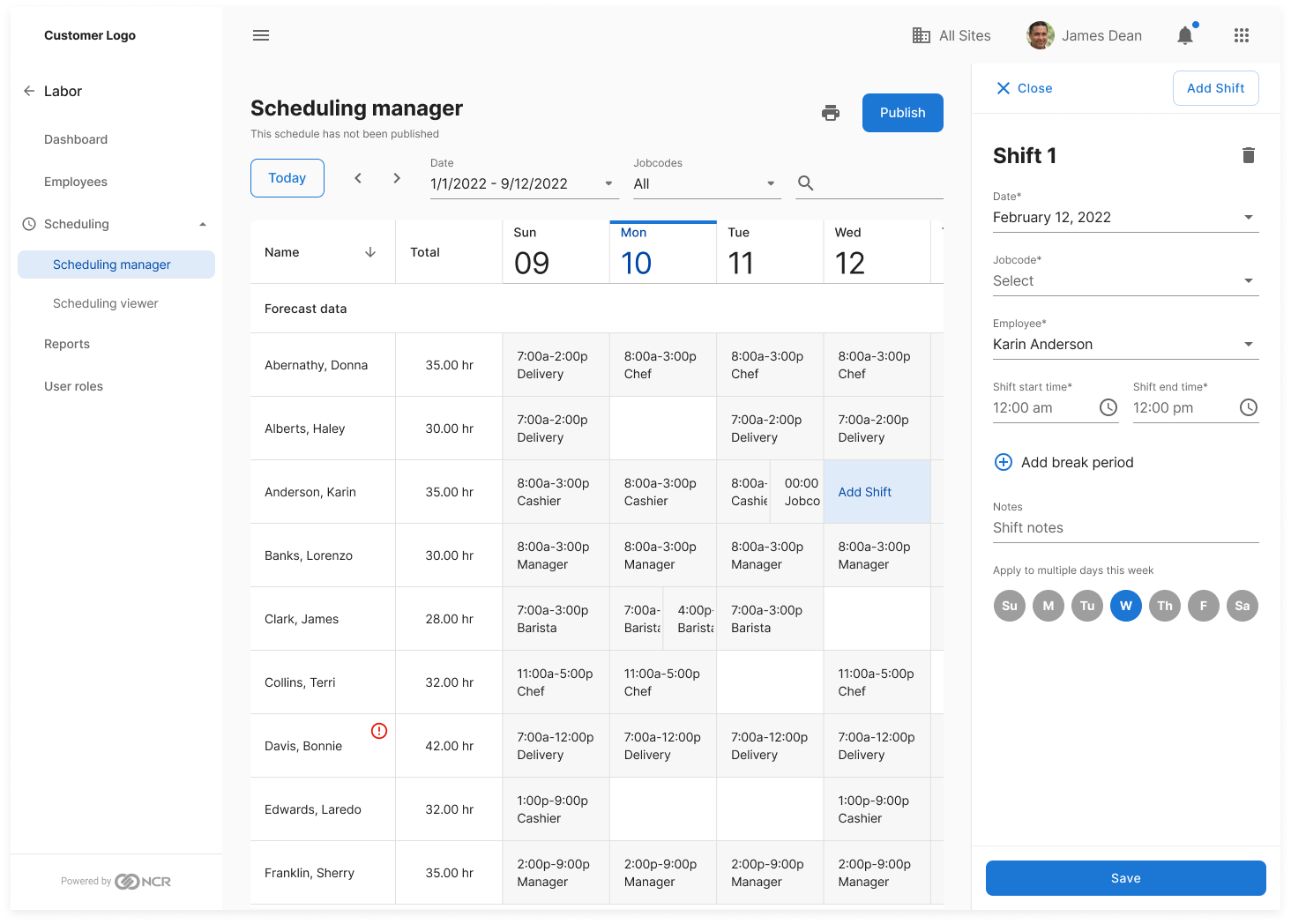Cloud Back Office
Lead Product Designer | Figma
Cloud Back Office is NCR’s initiative to reinvent and modernize their portfolio by taking existing legacy products with overlapping capabilities and creating one cloud solution. Cloud Back Office is a solution that will be intuitive, POS & device agnostic, mobile, and cloud-browser based. This product will be less hands-on so store managers can spend more time being on the floor and in-person with their staff. This product is a SaaS Solution which offers a Starter, Core, and Premium version of the product.
Overview
NCR wanted to create a best in class cloud based solution to help independent restaurants, emerging chains & enterprise accounts run their restaurants or stores.
The Challenge
Understand migration needed from over 6 legacy solutions to a new cloud based product.
Business Goals
Create an industry leading SaaS solution to lead the hospitality and retail industry.
The Process
As a lead designer, I had the responsibility of supervising and guiding four products that shared a common identity. These products were structured to provide three distinct subscription tiers - starter, core, and premium. Moreover, they were aligned with our overall control panel strategy, with plans to introduce new offerings and expand their scope in the future.
UX Responsibilities
Create sitemaps.
Create low-fidelity wireframes.
Prepare user testing questions and test.
Advocate for user stories and help refine requirements.
UI Responsibilities
Design high-fidelity UI comps.
Utilize, reinforce, and innovate the NCR Core design system.
Look across all products to ensure consistency.
Create shared patterns for all workstreams to leverage.
Understand & Research
With the objective in mind, we leveraged personas, site maps, user flows, and wireframes.
Labor
The labor product involved two primary user personas: a Restaurant Manager and an employee. The Restaurant Manager required a platform for configuring their employees, including adding, updating, and deleting employees within the software. After an employee was added to the store, they were sent an invitation to the self-service portal where they could create their profile. The Restaurant Manager could then add them to the schedule, which was the largest section of the application. The scheduling component allowed Restaurant Managers to create a schedule using predictive data and staff their store or multi-site locations with front of the house, the bar, and back of the house employees. Once the schedule was created, employees were notified and could check their assigned role and day.
Inventory
The inventory product was designed for Restaurant Managers to create raw items, manage vendors, and handle units of measure to ensure their store had the right inventory levels. The product enabled inventory managers to send alerts when certain items were running low on stock. Restaurant Managers could view the items in stock, their quantity, and containers from which they received the items from vendors. Once the items were received, Restaurant Managers could label and organize them appropriately in their stores. Lastly, the inventory product allowed Restaurant Managers to upload images of invoices to streamline the item creation process for their store. This feature enabled managers to quickly and accurately track inventory, without manually entering data into the system.
Sales
The sales product provided Restaurant Managers with comprehensive reports on various day-to-day aspects of their business. This allowed managers to gain insights into key performance indicators, such as the number of online orders, takeout orders, and dine-in customers. The reports also included transaction details, inventory, and labor costs, which enabled managers to make data-driven decisions to run their stores more efficiently. By leveraging the insights provided by the sales product, Restaurant Managers could identify areas for improvement, optimize their operations, and ultimately increase profitability.
The Evolving Product & Takeaways
The interface for our product was designed to be clean and simple, while incorporating a range of common capabilities that are critical to businesses. Our team was instrumental in driving the overall strategy for future product development. We developed a variety of patterns that followed UX Best practices, and then created documentation and scalable figma components to promote efficient collaboration across different teams and products. By leveraging our expertise in UX design, we were able to create an intuitive interface that streamlined the user experience, while also setting the foundation for future product development.

